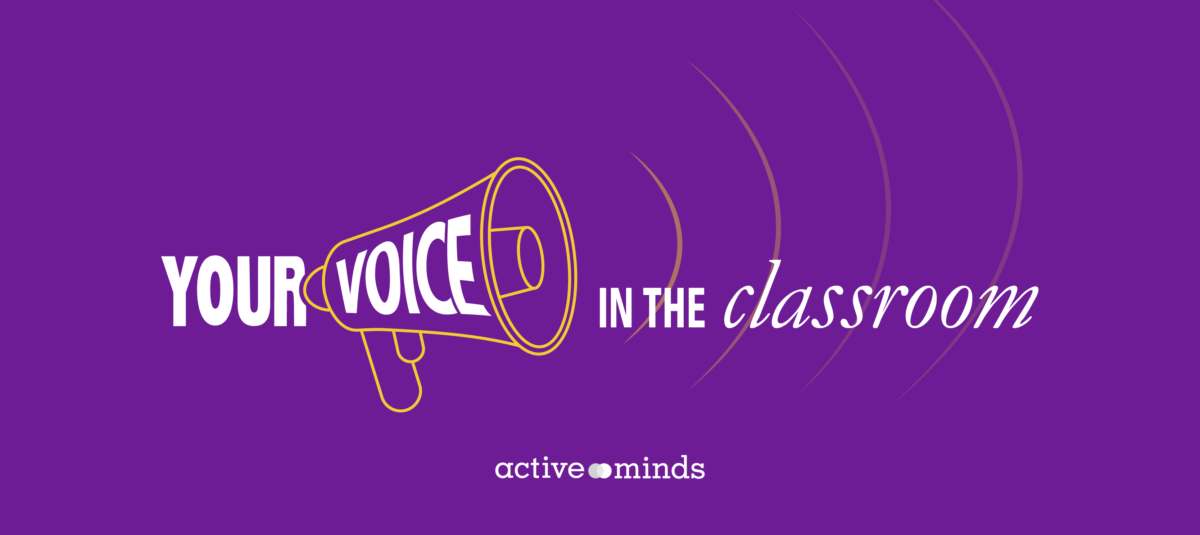Quarantine has not been easy for me. I haven’t seen my friends in weeks, my summer plans were all canceled, and the future remains uncertain. There have been days in which I have felt great and those in which I felt down. In the past, I took the social interaction and learning that I got every day at school for granted, but today, I miss it more than ever.
The time is now: Student mental health is suffering. In a survey conducted by Active Minds for college students across the country, 80% of respondents reported that COVID-19 has negatively impacted their mental health. Students continue to worry about whether their classes will be online or face-to-face; if they will be able to see their friends and family again, and whether they will be able to continue their education in the face of increasing financial difficulties.
I was fortunate enough to be aware of the resources in my community, but other students are not. Like me, many students will have a difficult time adjusting to the “new normal” this school year, and it is important that they are both aware of the resources available to them and are comfortable with getting help. Despite the anxiety concerning this school year, school faculty can play an essential role in helping students through this public health crisis and supporting their mental health.
Mental health promotion can begin in the classroom. The link between improved mental health and improved school performance is well-established (National Association of School Psychologists, 2012). The better the student’s mental health, the more likely that they will perform well in their courses. However, the structure of the course itself may be detrimental to student mental health. Research projects, papers, tests, and deadlines exacerbate anxiety and stress among students. Students may feel anxious about keeping up and meeting the high standards of themselves or others, and these feelings are only intensified during COVID-19.
The environment of the campus has a significant effect on whether students seek help when they are struggling. A study conducted on campus climate towards mental health found that “students who felt that their campus was a place where they were less likely to be stigmatized for admitting to a mental health problem — who felt that their campus community would support them in seeking treatment — were over 20 percent more likely to receive services,” (Stein et al., 2016).
Faculty play a significant role in shaping the campus’ environment to support student mental health. Discussing mental health in the classroom, advertising accommodations, and mental health services on campus, and working to fight stigma by letting students know that they are there for them, are all ways that school faculty can help students to succeed in this upcoming school year.
Faculty members can inform students on what mental health ACTUALLY is. Mental health should be valued the same as physical health. Unfortunately, it isn’t. Students lack awareness about mental health and often believe that it isn’t something that they need to think about. This perspective discourages students from seeking counseling or talking to friends about their struggles.
Students look up to their faculty members. Leading a classroom discussion on the importance of mental health, including information about mental health in your syllabus, and being open to talking to students about any problem they may have, makes students know that how they feel is important and teaches them a vital lesson: everyone has mental health.
Faculty can make students aware of the services available to them. More than half of the students surveyed by Active Minds said that they were not sure where to go for mental health services during the beginning stages of COVID. A few lines in a syllabus, a two-minute classroom discussion, and/or a signature line in emails outlining where to find mental health services could get more people the help they need.
Faculty can reduce stigma and encourage students to get the help they need. The national Healthy Minds study cites perceived stigma (the idea someone may have that others are thinking less of them for seeking help) as a barrier in accessing mental health services and supports. This isn’t surprising. Stigma can appear as an insuperable obstacle in getting students help. However, faculty can help remove this barrier for their students. Putting the “Here For You” symbol from Active Minds on your door and/or syllabus or simply telling students that you are willing to help them with any problems they may have encourages students to reach out to you. As a faculty member, you don’t need to be a clinician, you just need to be there for them. The V-A-R (Validate, Appreciate, Refer) model developed by Active Minds can help you provide the student with the resources they need while also helping the student through their imminent difficulties.
Addressing mental health in the classroom can be intimidating. However, faculty can help students through these unprecedented and difficult times by discussing mental health in classroom discussions, syllabi, and even signature lines, to increase mental health promotion and make students more comfortable in seeking help.
References
Active Minds. (2020, Spring). The Impact of COVID-19 on Student Mental Health. Retrieved August 13, 2020, from https://www.activeminds.org/studentsurvey/
National Association of School Psychologists. (2012). Research on the Relationship Between Mental Health and Academic Achievement . Retrieved August 13, 2020, from file:///C:/Users/BenjiHeim/Downloads/Academic-MentalHealthLinks.pdf
Stein, B. D., Sontag-Padilla, L., Ashwood, J. S., Woodbridge, M. W., Eberhart, N. K., May, L., Seelam, R., Briscombe, B., Mendelsohn, J., D’Amico, E. J., Osilla, K. C., Jaycox, L. H., & Burnham, M. A. (2016). Campus Climate Matters . RAND Corporation. Retrieved August 13, 2020, from https://www.rand.org/pubs/research_briefs/RB9904.html




